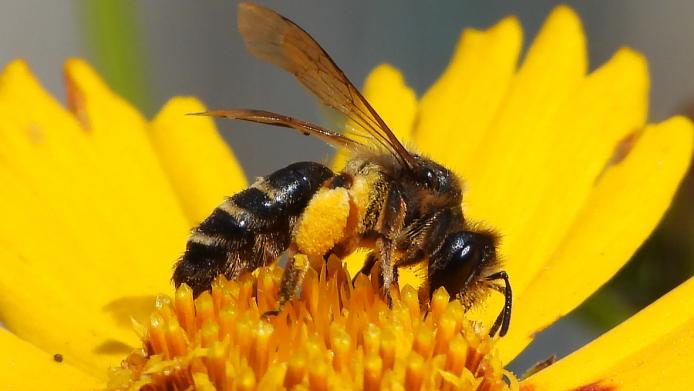Solution for: The sense of flavour 2
Answer Table
| 1. NOT GIVEN | 8. GOOD |
| 2. NOT GIVEN | 9. AROMA |
| 3. TRUE | 10. SEASONINGS |
| 4. NOT GIVEN | 11. FLAVOUR |
| 5. FALSE | 12. INDELIBLE |
| 6. ACQUIRED | 13. CHEMICAL AROMAS |
| 7. DIFFERENTIATE |
Exam Review
The sense of flavour 2

{A} Scientists now believe that human beings acquired the sense of taste as a way to avoid being poisoned. Edible plants generally taste sweet; deadly ones, bitter. Taste is supposed to help us differentiate food that’s good for us from food that’s not. The taste buds on our tongues can detect the presence of half a dozen or so basic tastes, including sweet, sour, bitter, salty, and umami (a taste discovered by Japanese researchers, a rich and full sense of deliciousness triggered by amino acids in foods such as shellfish, mushrooms, potatoes, and seaweed). Tastebuds offers a limited means of detection, however, compared with the human olfactory system, which can perceive thousands of different chemical aromas. Indeed, ‘flavor’ is primarily the smell of gases being released by the chemicals you’ve just put in your mouth. The aroma of food can be responsible for as much as 90% of its flavor.
{B} The act of drinking, sucking or chewing a substance releases its volatile gases. They flow out of the mouth and up the nostrils, or up the passageway at the back of the mouth, to a thin layer of nerve cells called the olfactory epithelium, located at the base of the nose, right between the eyes. The brain combines the complex smell signals from the epithelium with the simple taste signals from the tongue, assigns a flavor to what’s in your mouth, and decides if it’s something you want to eat.
{C} Babies like sweet tastes and reject bitter ones; we know this because scientists have rubbed various flavors inside the mouths of infants and then recorded their facial reactions. A person’s food preferences, like his or her personality, are formed during the first few years of life, through a process of socialization. Toddlers can learn to enjoy hot and spicy food, bland health food, or fast food, depending upon what the people around them eat. The human sense of smell is still not fully understood. It is greatly affected by psychological factors and expectations. The mind filters out the overwhelming majority of chemical aromas that surround us, focusing intently on some, ignoring others. People can grow accustomed to bad smells or good smells; they stop noticing what once seemed overpowering.
{D} Aroma and memory are somehow inextricably linked. A smell can suddenly evoke a long-forgotten moment. The flavours of childhood foods seem to leave an indelible mark, and adults often return to them, without always knowing why. These ‘comfort foods’ become a source of pleasure and reassurance a fact that fast-food chains work hard to promote Childhood memories of Happy Meals can translate into frequent adult visits to McDonald’s’, like those of the chain’s ‘heavy users’, the customers who eat there four or five times a week.
{E} The human craving for flavour has been a large unacknowledged and unexamined force in history. Royal empires have been built, unexplored lands have been traversed, great religions and philosophies have been forever changed by the spice trade. In 1492, Christopher Columbus set sail in order to try to find new seasonings and thus to make his fortune with this most desired commodity of that time. Today, the influence of flavour in the world marketplace is no less decisive. The rise and fall of corporate empires – soft-drink companies, snack-food companies, and fast-food chains – is frequently determined by how their products taste.
{F} The flavor industry emerged in the mid-1800s, as processed foods began to be manufactured on a large scale. Recognizing the need for flavor additives, the early food processors turned to perfume companies that had years of experience working with essential oils and volatile aromas. The great perfume houses of England, France, and the Netherlands produced many of the first flavor compounds. In the early part of the 20th century, Germany’s powerful chemical industry assumed the lead in flavour production. Legend has it that a German scientist discovered methyl anthranilate, one of the first artificial flavours, by accident while mixing chemicals in his laboratory. Suddenly, the lab was filled with the sweet smell of grapes. Methyl anthranilate later became the chief flavoring compound of manufactured grape juice.
{G} The quality that people seek most of all in a food, its flavour, is usually present in a quantity too infinitesimal to be measured by any traditional culinary terms such as ounces or teaspoons. Today’s sophisticated spectrometers, gas chromatograph, and headspace vapor analyzers provide a detailed map of a food’s flavour components, detecting chemical aromas in amounts as low as one part per billion. The human nose, however, is still more sensitive than any machine yet invented. A nose can detect aromas present in quantities of a few parts per trillion. Complex aromas, such as those of coffee or roasted meat, may be composed of gases from nearly a thousand different chemicals. The chemical that provides the dominant flavour of bell pepper can be tasted in amounts as low as 0.02 parts per billion; one drop is sufficient to add flavour to the amount of water needed to fill five average-sized swimming pools
Questions 1-5
Do the following statements agree with the information given in The Passage?
In boxes 1 – 5 on the answer sheet write
| TRUE | if the statement is True |
| FALSE | if the statement is false |
| NOT GIVEN | If the information is not given in the passage |
1 The brain determines which aromas we are aware of.
Answer: NOT GIVEN
2 The sense of taste is as efficient as the sense of smell.
Answer: NOT GIVEN
3 Personal tastes in food are developed in infancy.
Answer: TRUE
4 Christopher Columbus found many different spices on his travels.
Answer: NOT GIVEN
5 In the mid-1880s, man-made flavors were originally invented on purpose.
Answer: FALSE
Questions 6-11
Complete the sentence below. Choose ONE word from The Passage for each answer. Write your answers in boxes 6 – 11 on your answer sheet
|
It is thought that the sense of taste was 6 |
Question 12-13
Write NO MORE THAN TWO WORDS from Reading Passage 1 for each answer.
Write your answers in boxes 12-13 on your answer sheet
12. We associate certain smells with the past as they are 12
Answer: INDELIBLE
13. Modern technology is able to help determine the minute quantities of 13 found in food.
Answer: CHEMICAL AROMAS
Other Tests
-
Total questions: 13
- 5- TRUE-FALSE-NOT GIVEN
- 4- Matching Information
- 4- Summary, form completion
-
Total questions: 13
- 4- TRUE-FALSE-NOT GIVEN
- 5- Matching Information
- 4- Summary, form completion
-
Total questions: 14
- 4- TRUE-FALSE-NOT GIVEN
- 5- Matching Information
- 5- Summary, form completion
-
Total questions: 13
- 3- TRUE-FALSE-NOT GIVEN
- 6- Matching Headings
- 4- Summary, form completion
-
Total questions: 13
- 4- Matching Information
- 4- Sentence Completion
- 5- Summary, form completion
-
Total questions: 14
- 2- Multiple Choice
- 5- TRUE-FALSE-NOT GIVEN
- 1- Sentence Completion
- 6- Summary, form completion











